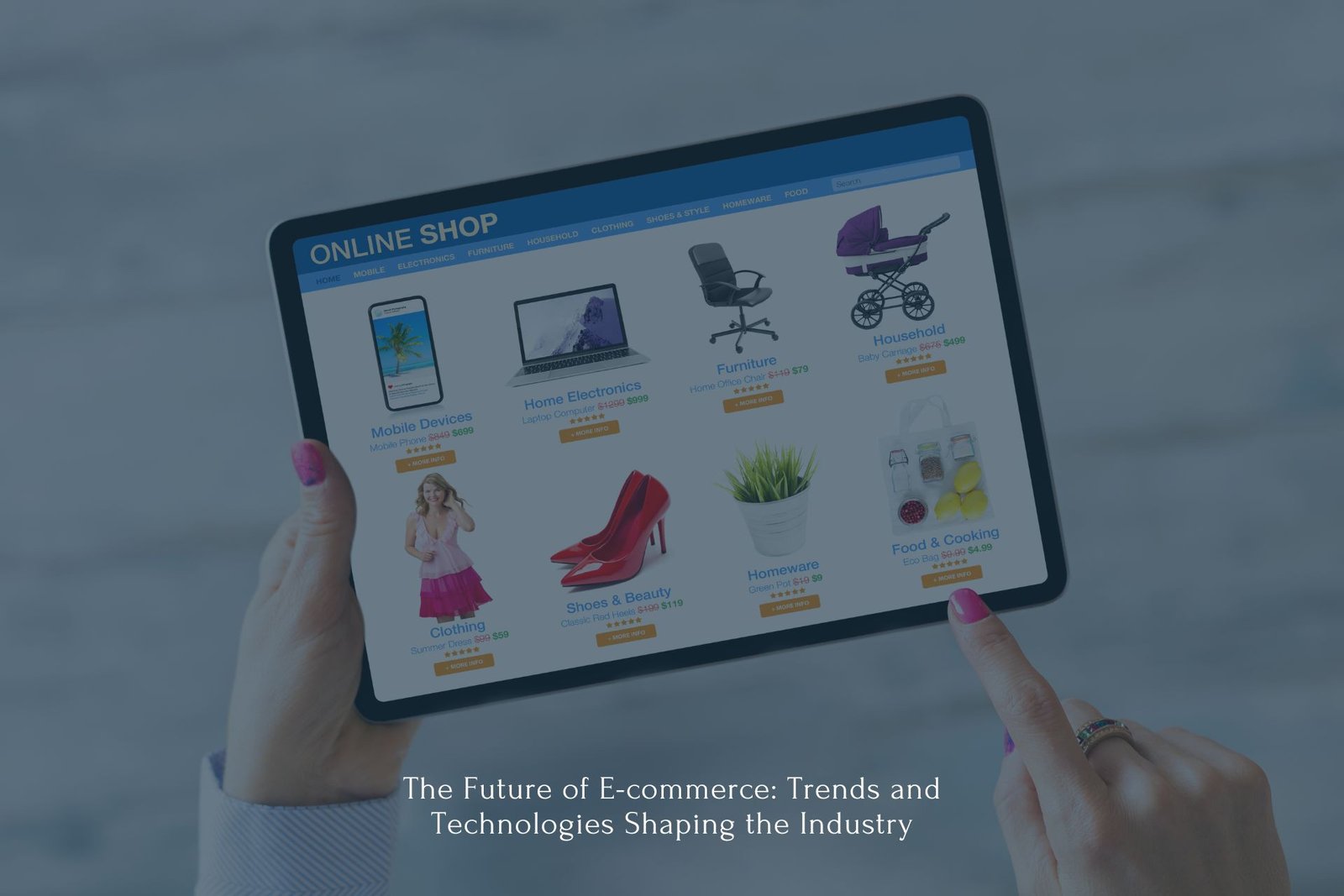Introduction The e-commerce landscape is constantly evolving, driven by advancements in technology and changing consumer behavior. To succeed in this competitive environment, businesses must stay ahead of the curve and adapt to the latest trends shaping the industry. This blog explores the key trends and technologies that are set to define the future of e-commerce.
1. Key E-commerce Trends
Artificial Intelligence and Machine Learning: AI is becoming a critical component in e-commerce, helping businesses personalize shopping experiences, predict customer needs, and improve product recommendations. Machine learning algorithms analyze vast amounts of data to deliver targeted marketing campaigns, optimize inventory management, and enhance customer support through chatbots and virtual assistants.
Mobile Optimization: With the majority of internet traffic now coming from mobile devices, optimizing e-commerce websites for mobile is no longer an option—it's a necessity. Mobile-first design, faster load times, and seamless checkout processes are essential to capture and retain customers on mobile platforms.
Personalization: Consumers expect a more personalized shopping experience. Businesses that use customer data to create personalized recommendations, special offers, and targeted communications have a competitive edge. Personalization technologies, such as predictive analytics and recommendation engines, help businesses offer tailored experiences that increase customer satisfaction and loyalty.
Augmented Reality (AR) and Virtual Reality (VR): These technologies are revolutionizing product visualization in e-commerce. AR allows customers to see how products would look in their own environment, while VR offers an immersive shopping experience. Companies like IKEA and Sephora are already using these technologies to let customers try out products before making a purchase.
Sustainability: Increasing consumer awareness about environmental issues is prompting businesses to adopt more sustainable practices. This includes using eco-friendly packaging, offering recycling options, and choosing suppliers that follow ethical standards. Sustainability can also play a significant role in branding and customer loyalty.
2. Technologies Driving E-commerce Innovation
Blockchain: Beyond cryptocurrencies, blockchain technology has potential applications in e-commerce, including supply chain transparency, secure transactions, and enhanced data protection. Businesses are exploring blockchain’s ability to streamline operations and build trust with customers.
Voice Commerce: Voice-activated devices are gaining popularity, with consumers increasingly using voice search to shop. This trend is pushing businesses to optimize for voice search and consider voice commerce as a new sales channel.
Big Data and Analytics: The use of big data allows businesses to gain insights into customer behavior, preferences, and trends. This data-driven approach enables more informed decision-making, targeted marketing, and personalized customer experiences.
3. Challenges and Opportunities for Businesses
Challenges: Keeping up with technological advancements, managing data privacy regulations, and addressing the challenges of integrating new technologies into existing systems are some of the key challenges businesses face.
Opportunities: Businesses that embrace these changes have the opportunity to enhance customer experience, improve operational efficiency, and gain a competitive advantage. By staying agile and innovative, businesses can adapt to changing customer expectations and market dynamics.
Conclusion The future of e-commerce is exciting, with technology playing a pivotal role in shaping how businesses operate and interact with customers. By embracing trends such as AI, mobile optimization, and personalization, businesses can meet consumer demands and create meaningful experiences that drive growth and success in the digital marketplace.







